Posted on November 8th, 2010 by ASEE
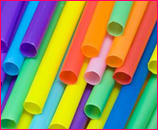 Students in grades 6-12 are challenged to build a drinking straw tower that can withstand simulated earthquake vibrations and increasing weight and pressure. Doing so, they learn basic principles of design and earthquake engineering while practicing team skills.
Students in grades 6-12 are challenged to build a drinking straw tower that can withstand simulated earthquake vibrations and increasing weight and pressure. Doing so, they learn basic principles of design and earthquake engineering while practicing team skills.
Read More
Filed under: Class Activities, Grades 6-8, Grades 6-8, Grades 9-12, Grades 9-12, Lesson Plans | 8 Comments »
Tags: Building Design, Civil Engineering, Class Activities, Engineering Design Process, Lesson Plans, Safety engineering
Posted on October 25th, 2010 by ASEE
 Students in grades 4-12 apply the engineering design process to a real-life problem that affects them at school. The class selects a single problem then comes up with and tests a design solution. Students gain hands-on experience with engineering problem-solving.
Students in grades 4-12 apply the engineering design process to a real-life problem that affects them at school. The class selects a single problem then comes up with and tests a design solution. Students gain hands-on experience with engineering problem-solving.
Read More
Filed under: Grades 6-8, Grades 9-12, Grades K-5, K-12 Outreach Programs, Lesson Plans | Comments Off on Lesson: Problem-solve Your School
Tags: Engineering Design Process, Grades 4-12, Lesson Plan, Problem Solving
Posted on September 6th, 2010 by Jaimie Schock
 The RealWorld-InWorld NASA Engineering Design Challenge encourages students in grades 9-12 to explore and build skills essential for successful careers in STEM subjects through two phases of project-based learning and team competition, working with the Webb telescope.
The RealWorld-InWorld NASA Engineering Design Challenge encourages students in grades 9-12 to explore and build skills essential for successful careers in STEM subjects through two phases of project-based learning and team competition, working with the Webb telescope.
Read More
Filed under: Grades 9-12, K-12 Outreach Programs | Comments Off on Contest: NASA Engineering Design Challenge
Tags: Competitions for Students, Computer Engineering, Contest, Engineering Design, Engineering Design Process, NASA, Science Contest
Posted on August 16th, 2010 by ASEE
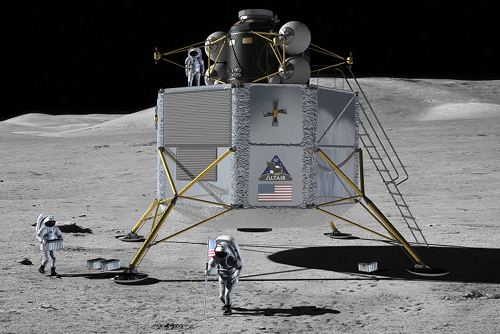
In this lesson, students assume the role of NASA aerospace engineers, following the engineering design process to learn the steps for designing, creating, and improving equipment. They design and build a shock-absorbing system that will protect two “astronauts” when they land, and come to understand some of the challenges of lunar landings.
Read More
Filed under: Grades 6-8, Grades K-5, Lesson Plans | 3 Comments »
Tags: Aerospace, Aerospace Engineering, Engineering Design Process, Grades 3-8, NASA
Posted on July 19th, 2010 by ASEE
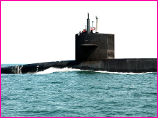 Students in grades 5-8 learn the basic principle of buoyancy and how submarines use it to dive and ascend in water through creating their own submarine out of a soda bottle, pennies, and other household items. Activity courtesy of the National Museum of the U.S. Navy.
Students in grades 5-8 learn the basic principle of buoyancy and how submarines use it to dive and ascend in water through creating their own submarine out of a soda bottle, pennies, and other household items. Activity courtesy of the National Museum of the U.S. Navy.
Read More
Filed under: Class Activities, Grades 6-8, Grades 9-12, Grades K-5, K-12 Outreach Programs, Lesson Plans | 3 Comments »
Tags: buoyancy, Class Activities, Engineering Design Process, Nautical Engineering, Ocean, Ocean science, submarine, U.S. Navy
Posted on June 7th, 2010 by ASEE
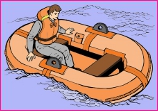 Do your students have what it takes to survive and be rescued? In this activity from Boston’s Museum of Science, student teams practice the design skills of engineers as they create survival tools from a crate of supplied materials. They learn about teamwork, brainstorming, innovation, and creative material reuse in attempting to create a protective shelter, a method for gathering food, and a signal for help. The teams test their designs for feasibility before having a design review with the rest of the class.
Do your students have what it takes to survive and be rescued? In this activity from Boston’s Museum of Science, student teams practice the design skills of engineers as they create survival tools from a crate of supplied materials. They learn about teamwork, brainstorming, innovation, and creative material reuse in attempting to create a protective shelter, a method for gathering food, and a signal for help. The teams test their designs for feasibility before having a design review with the rest of the class.
Read More
Filed under: Class Activities, Grades 6-8, Grades K-5 | 2 Comments »
Tags: Engineering Design Process, Grades 4-10, Lesson Plan
Posted on June 7th, 2010 by ASEE
 This simple lesson from The Works Museum in Minnesota consists of two activities that introduce elementary school students to the engineering design process. Students first work through a chart detailing the steps of the design process and then use the steps to consider ways to solve one of three problems: rescuing a trapped kitten, devising a way to water plants while on vacation, and rigging up a remote light switch.
This simple lesson from The Works Museum in Minnesota consists of two activities that introduce elementary school students to the engineering design process. Students first work through a chart detailing the steps of the design process and then use the steps to consider ways to solve one of three problems: rescuing a trapped kitten, devising a way to water plants while on vacation, and rigging up a remote light switch.
Read More
Filed under: Class Activities, Grades 6-8, Grades 6-8, Grades K-5, Grades K-5, Lesson Plans | 1 Comment »
Tags: Engineering Design Process, Grades 4 - 8, The Works museum
Posted on May 24th, 2010 by ASEE
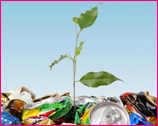 Student teams use the engineering design process to create a useful product of their choice out of recyclable items and “trash.” The class is given a “landfill” of reusable items and allowed a limited amount of bonding materials. The activity addresses the importance of reuse and encourages students to look at ways they can reuse items they would normally throw away. Students are further prompted to consider the problems with growing landfills, and efforts by engineers and others to reduce pollution, emissions, and trash production.
Student teams use the engineering design process to create a useful product of their choice out of recyclable items and “trash.” The class is given a “landfill” of reusable items and allowed a limited amount of bonding materials. The activity addresses the importance of reuse and encourages students to look at ways they can reuse items they would normally throw away. Students are further prompted to consider the problems with growing landfills, and efforts by engineers and others to reduce pollution, emissions, and trash production.
Read More
Filed under: Grades 6-8, Lesson Plans | 1 Comment »
Tags: Engineering Design Process, Environmental Engineering, Environmental science, Grades 6-8, Recycling, Trash
Posted on May 10th, 2010 by ASEE
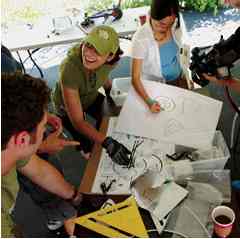 This online workshop was developed by NASA and PBS’s DESIGN SQUAD for educators and afterschool leaders who want to build skills and confidence in guiding students through engineering activities. Participants gain strategies for strengthening kids’ critical-thinking abilities and getting them excited about using the design process–the series of steps engineers use to arrive at solutions.
This online workshop was developed by NASA and PBS’s DESIGN SQUAD for educators and afterschool leaders who want to build skills and confidence in guiding students through engineering activities. Participants gain strategies for strengthening kids’ critical-thinking abilities and getting them excited about using the design process–the series of steps engineers use to arrive at solutions.
Read More
Filed under: Web Resources | Comments Off on Online Workshop: Engineering Design Process
Tags: Design, Engineering Design Process, NASA, PBS, Web Resources
 Students in grades 6-12 are challenged to build a drinking straw tower that can withstand simulated earthquake vibrations and increasing weight and pressure. Doing so, they learn basic principles of design and earthquake engineering while practicing team skills.
Students in grades 6-12 are challenged to build a drinking straw tower that can withstand simulated earthquake vibrations and increasing weight and pressure. Doing so, they learn basic principles of design and earthquake engineering while practicing team skills.








 Students in grades 4-12 apply the engineering design process to a real-life problem that affects them at school. The class selects a single problem then comes up with and tests a design solution. Students gain hands-on experience with engineering problem-solving.
Students in grades 4-12 apply the engineering design process to a real-life problem that affects them at school. The class selects a single problem then comes up with and tests a design solution. Students gain hands-on experience with engineering problem-solving. The RealWorld-InWorld NASA Engineering Design Challenge encourages students in grades 9-12 to explore and build skills essential for successful careers in STEM subjects through two phases of project-based learning and team competition, working with the Webb telescope.
The RealWorld-InWorld NASA Engineering Design Challenge encourages students in grades 9-12 to explore and build skills essential for successful careers in STEM subjects through two phases of project-based learning and team competition, working with the Webb telescope.
 Students in grades 5-8 learn the basic principle of buoyancy and how submarines use it to dive and ascend in water through creating their own submarine out of a soda bottle, pennies, and other household items. Activity courtesy of the National Museum of the U.S. Navy.
Students in grades 5-8 learn the basic principle of buoyancy and how submarines use it to dive and ascend in water through creating their own submarine out of a soda bottle, pennies, and other household items. Activity courtesy of the National Museum of the U.S. Navy. Do your students have what it takes to survive and be rescued? In this activity from Boston’s Museum of Science, student teams practice the design skills of engineers as they create survival tools from a crate of supplied materials. They learn about teamwork, brainstorming, innovation, and creative material reuse in attempting to create a protective shelter, a method for gathering food, and a signal for help. The teams test their designs for feasibility before having a design review with the rest of the class.
Do your students have what it takes to survive and be rescued? In this activity from Boston’s Museum of Science, student teams practice the design skills of engineers as they create survival tools from a crate of supplied materials. They learn about teamwork, brainstorming, innovation, and creative material reuse in attempting to create a protective shelter, a method for gathering food, and a signal for help. The teams test their designs for feasibility before having a design review with the rest of the class. This simple lesson from The Works Museum in Minnesota consists of two activities that introduce elementary school students to the engineering design process. Students first work through a chart detailing the steps of the design process and then use the steps to consider ways to solve one of three problems: rescuing a trapped kitten, devising a way to water plants while on vacation, and rigging up a remote light switch.
This simple lesson from The Works Museum in Minnesota consists of two activities that introduce elementary school students to the engineering design process. Students first work through a chart detailing the steps of the design process and then use the steps to consider ways to solve one of three problems: rescuing a trapped kitten, devising a way to water plants while on vacation, and rigging up a remote light switch. Student teams use the engineering design process to create a useful product of their choice out of recyclable items and “trash.” The class is given a “landfill” of reusable items and allowed a limited amount of bonding materials. The activity addresses the importance of reuse and encourages students to look at ways they can reuse items they would normally throw away. Students are further prompted to consider the problems with growing landfills, and efforts by engineers and others to reduce pollution, emissions, and trash production.
Student teams use the engineering design process to create a useful product of their choice out of recyclable items and “trash.” The class is given a “landfill” of reusable items and allowed a limited amount of bonding materials. The activity addresses the importance of reuse and encourages students to look at ways they can reuse items they would normally throw away. Students are further prompted to consider the problems with growing landfills, and efforts by engineers and others to reduce pollution, emissions, and trash production.